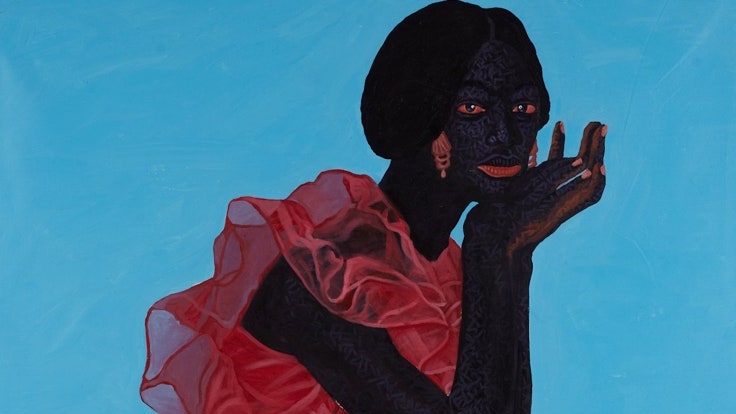“I want to see Black people looking nice, living nice,” Botchway says. He puts his subjects in sumptuous jackets (Green Fluffy Coat) and adorns them with beautiful jewelry, headwraps, and hats (Green Stone Earrings; Check My Nails; Green Earflip Cap). “A lot of people are living good, and we have to project that,” he adds. This is a deliberate recasting of art history. “The Black figure has historically been an invisible presence” in art, Eshun says. In the 18th and 19th centuries, “Black figures were painted by European painters, and often when they’re there, they’re there without a name, without a history.” Botchway’s work seeks to change that.
But of course, one cannot ignore the strife of 2020, and the year’s events have found their way into the work as well. In blacklivesmatter (divine protestings), five people hold protest signs against a chartreuse background. “I was listening to the news…Black Americans protesting about killings,” says Botchway. “For me, [those protests] are a form of inspiration.”
Botchway’s earlier figurative work was more photo-realistic, heavily influenced by Ghana’s street art. The more stylized Impressionism of his 2020 purple-hued portraits is a pivot that, he has said, is rooted in a desire to have some fun with his subjects, and is a return to his longtime love of Impressionism. Removing certain details also broadens the interpretation—there’s more room for the viewer to bring their own emotions into the experience.
Through the evolution of his style, Botchway’s commitment to telling the stories of Black people has remained immutable. “We are in a time where we need to elevate Blackness,” he says.
